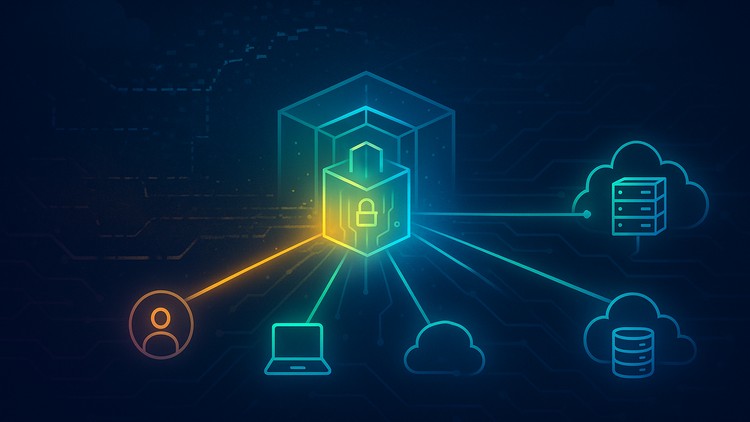
All about Zero Trust Architecture
What you will learn
Zero Trust’s core principles like “never trust, always verify” and its historical context
SDP’s definition, function, and underlying technologies (SPA, mTLS) as a ZTA implementation
Key ZT planning considerations, including protect/attack surfaces and transaction flows
ZT and SDP’s technical and business benefits, enhancing resilience and mitigating cyber threats
Common ZTA implementation options, including SDP, ZTNA, and Google BeyondCorp
Introduction to Zero Trust
Add-On Information:
Note➛ Make sure your 𝐔𝐝𝐞𝐦𝐲 cart has only this course you're going to enroll it now, Remove all other courses from the 𝐔𝐝𝐞𝐦𝐲 cart before Enrolling!
- Embark on a transformative exploration of modern cybersecurity, moving beyond traditional perimeter-based defenses.
- Understand the fundamental shift in security philosophy required to protect dynamic and distributed digital environments.
- Unpack the strategic imperative behind adopting a Zero Trust model in today’s threat landscape.
- Discover how to architect robust security frameworks that inherently minimize the impact of breaches.
- Learn to identify and secure critical data assets and resources, regardless of their location or user access.
- Explore practical strategies for achieving granular control over user and device access to sensitive information.
- Gain insights into the operational advantages of implementing Zero Trust, from simplified security management to enhanced compliance.
- Analyze the role of identity and access management as the cornerstone of a secure Zero Trust ecosystem.
- Evaluate the impact of Zero Trust on an organization’s ability to adapt to evolving business needs and emerging technologies.
- Develop an appreciation for the continuous monitoring and validation essential for maintaining a Zero Trust posture.
- Understand the collaborative effort required across IT, security, and business units to successfully implement Zero Trust.
- Prepare to articulate the value proposition of Zero Trust to stakeholders and champion its adoption.
- Explore best practices for migrating from legacy security models to a comprehensive Zero Trust architecture.
- Consider the future implications of Zero Trust in securing the expanding Internet of Things (IoT) and edge computing environments.
- PROS:
- Provides a clear roadmap for modernizing security posture.
- Equips learners with the knowledge to significantly reduce an organization’s attack surface.
- Fosters a proactive security mindset essential for advanced threat mitigation.
- CONS:
- May require a foundational understanding of networking and security concepts for maximum benefit.
English
language